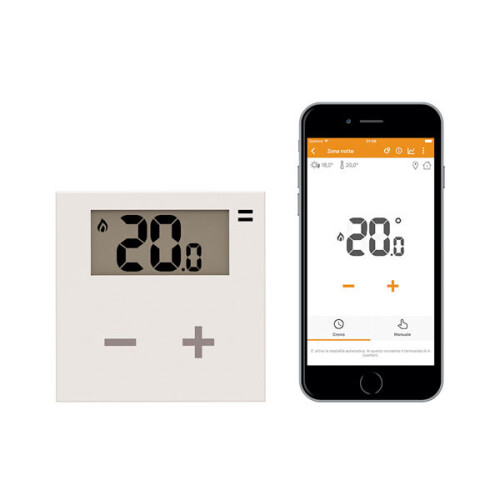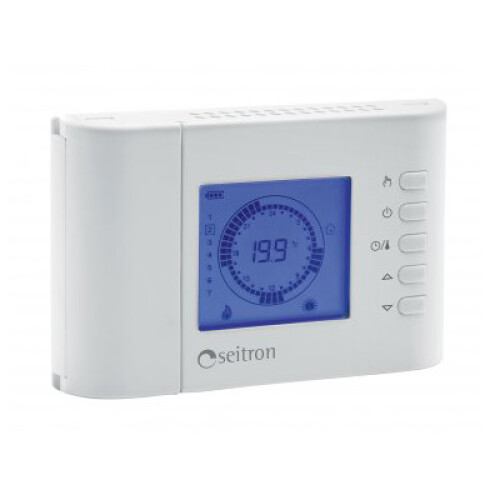Chronothermostats
Programmable thermostats: intelligent control for comfort and energy efficiency
Programmable thermostats are essential devices for intelligently managing temperature in residential, commercial, and industrial buildings. Thanks to their ability to schedule and automatically regulate heating and cooling, programmable thermostats help optimise occupant comfort while reducing energy consumption.
These devices maintain ideal temperatures during specific times of the day, adapting to user needs and environmental conditions, leading to significant energy cost savings.
How programmable thermostats work
Programmable thermostats combine the functions of a traditional thermostat with a programmable timer. While thermostats regulate indoor temperature based on manual settings or user commands, programmable thermostats allow automatic scheduling of heating and cooling for specific times of the day or week.
The basic operation of a programmable thermostat is simple: the user sets a series of desired temperatures for different times of the day, such as morning, afternoon, evening, and night. The device then automatically adjusts the HVAC system to reach and maintain these temperatures at the scheduled times, ensuring optimal comfort without energy waste. More advanced programmable thermostats can adapt to user habits, learning thermal preferences and adjusting heating and cooling accordingly.
Types of programmable thermostats
There are various types of programmable thermostats, each designed to meet specific operational needs and applications. The main categories include:
- Analogue programmable thermostats: These devices, while offering scheduling functions, use a simple analogue interface with dials and knobs. They are easy to use and provide a budget-friendly option for those seeking a basic temperature control solution. Analogue programmable thermostats are ideal for residential spaces and small offices where complex scheduling is not required.
- Digital programmable thermostats: These devices feature a digital interface, often equipped with LCD screens that make scheduling more intuitive and precise. Digital programmable thermostats offer greater customisation options and may include additional functions such as energy consumption monitoring, remote control, and temperature trend visualisation. They are suitable for users who need more control and flexibility in managing indoor climate.
- Wireless programmable thermostats: These thermostats can be controlled remotely via a wireless connection, often through a mobile app. This feature allows users to adjust their home's or office’s temperature even when away, ensuring optimal comfort upon their return. Wireless programmable thermostats are particularly useful for people with dynamic lifestyles who want maximum flexibility in climate control.
- Smart programmable thermostats: These devices represent the most advanced evolution of programmable thermostats, integrating IoT (Internet of Things) and artificial intelligence technologies. Smart programmable thermostats can learn user habits, automatically adjusting settings to optimise comfort and reduce energy consumption. They can be controlled via voice assistants such as Amazon Alexa or Google Assistant and often include advanced monitoring features such as presence detection and integration with other smart home devices.
- Multi-zone programmable thermostats: These thermostats allow independent temperature control in different zones or rooms of a building. Each zone can be programmed separately to maintain different temperatures based on specific needs. This function is particularly useful in large buildings or homes where heating or cooling requirements vary from one room to another.













